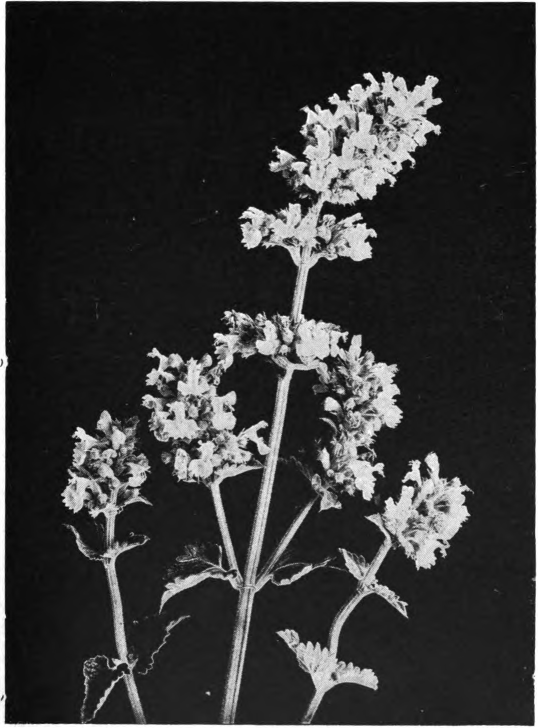There must be sufficient rain, however, during the preceding fall and winter to enable the plants to make the required growth. Catsclaw honey is white to light amber in color, very heavy, with a rich mild flavor, and is regarded by the native Texans as one of the finest honeys in the world. It granulates with a smooth, waxy grain. Commercial quantities of either catsclaw or huajilla honey are seldom unmixed, as they bloom at nearly the same time. At Uvalde, Texas, they furnish the larger part of the surplus, and 200 pounds per colony has not been unusual. Late cold weather sometimes cuts short the flow. This species occurs

Fig. 38. — Catnip (Nepeta Cataria). Photographed by Lovell.
from southern Texas to southern California near the Mexican border, and extends southward into Mexico. (Pig. 39.)
Catsclaw is a bushy shrub, or small tree, with low-spreading branches, attaining a height of 15 to 20 feet, and armed with short, curved, pricklelike spines, whence the name, catsclaw. The semi-desert region of Texas, where these thorny shrubs grow, can not be used for farming without irrigation; and the Acacias and mesquite are, therefore, likely to remain a permanent pasturage for bees, unmolested by the onward march of civilization, winch will fail to displace them with more profitable farm crops.